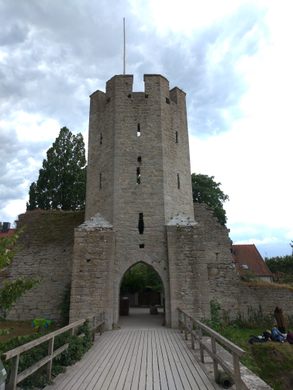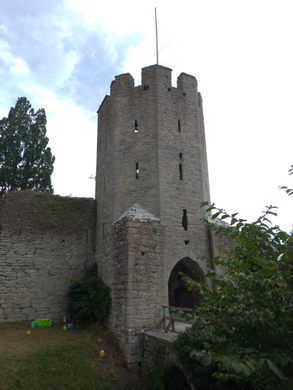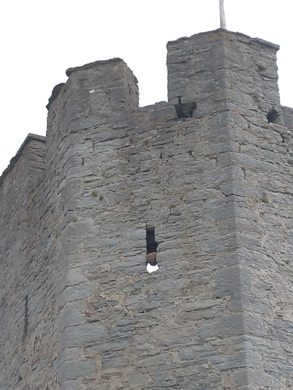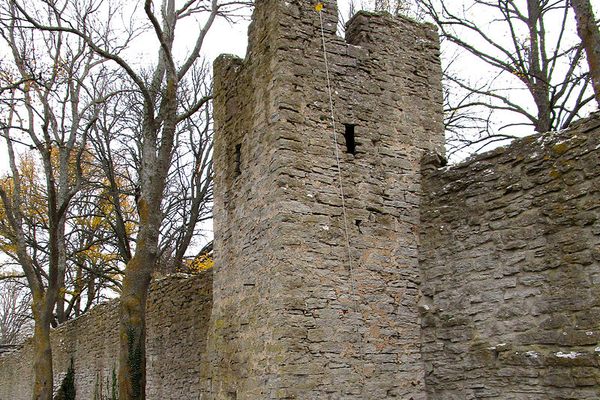Sankt Göransporten Arrow Slit
A catapult rock from Gotland’s 13th-century civil war is still lodged in Scandinavia's best-preserved medieval city wall.
The medieval wall surrounding the Gotland town of Visby comes with a twist: The parts facing the sea are lower and thinner than those facing the countryside. Look closely at the Sankt Göransporten (Saint George Gate) arrow slit, and you’ll see that the wall also testifies to the civil war that ravaged the Swedish island in the late 13th century.
Visby’s medieval residents were mostly merchants and craftspeople, while those living outside the wall were typically farmers and fishermen. These groups worked well together before the inland parts were constructed in the 13th century, but tensions rose swiftly thereafter.
The city had started to tax Gotlanders who wanted to sell their goods inside the city walls, and the country folk were forbidden from participating in international trade. Instead, they could only trade with locals who would then resell the goods for a profit.
A Gotland civil war between town and country ensued at the end of the 13th century, culminating in Swedish King Magnus III’s intervention. The king mediated the 1288 Treaty of Gotland, and seemed to side more or less with the oppressed country peasants. But the treaty worked in his favor, too, strengthening his hold over Gotland which had previously enjoyed some degree of independence.
You can still find a single remnant from the war: a single stone, shot by the peasants from a mangonel, latched in one of the wall’s arrow slits. But the whole wall is worth checking out—it’s the best-preserved medieval city wall in Scandinavia.
Know Before You Go
You can see the stone in the firing window on the fourth floor of the tower.
















Follow us on Twitter to get the latest on the world's hidden wonders.
Like us on Facebook to get the latest on the world's hidden wonders.
Follow us on Twitter Like us on Facebook